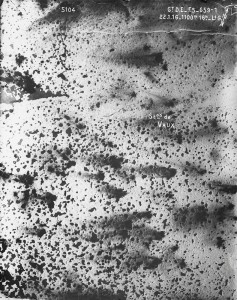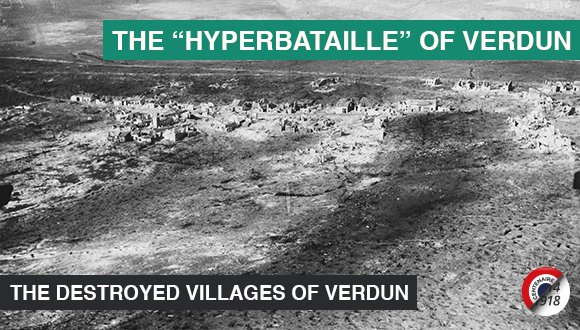 In 1914, the rural area that was to become the geographical area of the Battle of Verdun had many small villages of 100 inhabitants each. All the residents of these villages were evacuated before the battle. As the battle raged on, these small villages found themselves in the middle of incessant bombardments, attacks and counterattacks.
In 1914, the rural area that was to become the geographical area of the Battle of Verdun had many small villages of 100 inhabitants each. All the residents of these villages were evacuated before the battle. As the battle raged on, these small villages found themselves in the middle of incessant bombardments, attacks and counterattacks.
 The small village of Fleury-devant-Douaumont was captured and recaptured sixteen times during the summer of 1916. Once the battle was over, nothing was left of these small villages excepted for a vast field of ruins, a tangled wreck of concrete, steel and dust littered with corpses and unexploded ordnance. This chain of non-contiguous devastated landscapes could be seen all along the Western Front. At the end of 1918, French authorities designated as «Zone Rouge» (Red Zone) all the lands that had been completely devastated, impossible to clean and inhabit. In the Verdun sector where the landscape was brutally devastated by war to become a national symbol, French authorities decided that the memory of nine villages that had been annihilated should be preserved as a testimony of war and officially declared that they had «Died for France».
The small village of Fleury-devant-Douaumont was captured and recaptured sixteen times during the summer of 1916. Once the battle was over, nothing was left of these small villages excepted for a vast field of ruins, a tangled wreck of concrete, steel and dust littered with corpses and unexploded ordnance. This chain of non-contiguous devastated landscapes could be seen all along the Western Front. At the end of 1918, French authorities designated as «Zone Rouge» (Red Zone) all the lands that had been completely devastated, impossible to clean and inhabit. In the Verdun sector where the landscape was brutally devastated by war to become a national symbol, French authorities decided that the memory of nine villages that had been annihilated should be preserved as a testimony of war and officially declared that they had «Died for France».
 Today, the only testimonies left of these “destroyed villages” are some ruins, a small chapel built on the site of a former church and some signs stating where the shops, baker, school and farms once stood. These nine villages are administered by unelected mayors who are symbolically maintaining their administrative existence. In accordance with French Law on War Damages, the French government bought 7,000 hectares of former farmland from these villages that added up to the 10,000 hectares of battleground already purchased. The whole area was designated a «Red Zone» meaning that any construction is prohibited have been reforested.
Today, the only testimonies left of these “destroyed villages” are some ruins, a small chapel built on the site of a former church and some signs stating where the shops, baker, school and farms once stood. These nine villages are administered by unelected mayors who are symbolically maintaining their administrative existence. In accordance with French Law on War Damages, the French government bought 7,000 hectares of former farmland from these villages that added up to the 10,000 hectares of battleground already purchased. The whole area was designated a «Red Zone» meaning that any construction is prohibited have been reforested.


Ajouter un commentaire